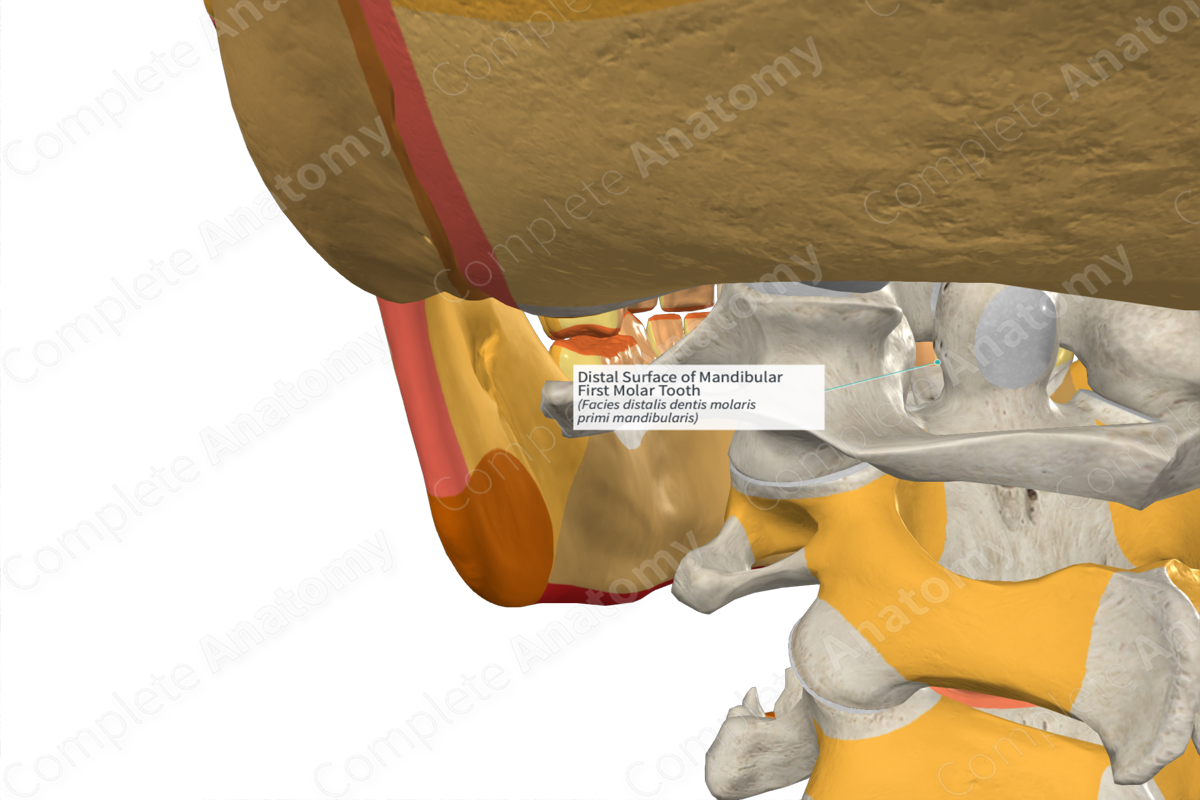
Distal Surface of Mandibular First Molar Tooth
Facies distalis dentis molaris primi mandibularis
Read moreDescription
The distal surface is the aspect of the mandibular first molar tooth that faces towards the mandibular second molar tooth. It is one of the five surfaces of the crown of the tooth, the other four being the buccal, lingual, mesial, and occlusal surfaces. It consists of a contact zone, which is the area of the tooth that touches the adjacent tooth of the same dental arcade.
The distal surface meets the:
- buccal surface at the distobuccal angle;
- lingual surface at the distolingual angle;
- occlusal surface at the distoocclusal angle.
For descriptive purposes, the distal surface of a mandibular tooth can be divided by two horizontal lines into three portions. In a superior to inferior direction, these are the:
- occlusal third;
- middle third;
- cervical third.
Furthermore, the distal surface of a tooth can also be divided by two vertical lines into three portions. In a lingual to buccal direction, these are the:
- lingual third;
- middle third;
- buccal third.
Overall, the mesial and distal surfaces of all teeth are collectively known as approximal surfaces, or proximal surfaces. The approximal surfaces are the surfaces of a tooth that face adjacent teeth of the same dental arcade. Each tooth has two approximal surfaces:
- the approximal surface that lies closest to the midline is known as the mesial surface;
- the approximal surface that lies furthest away from the midline is known as the distal surface.
